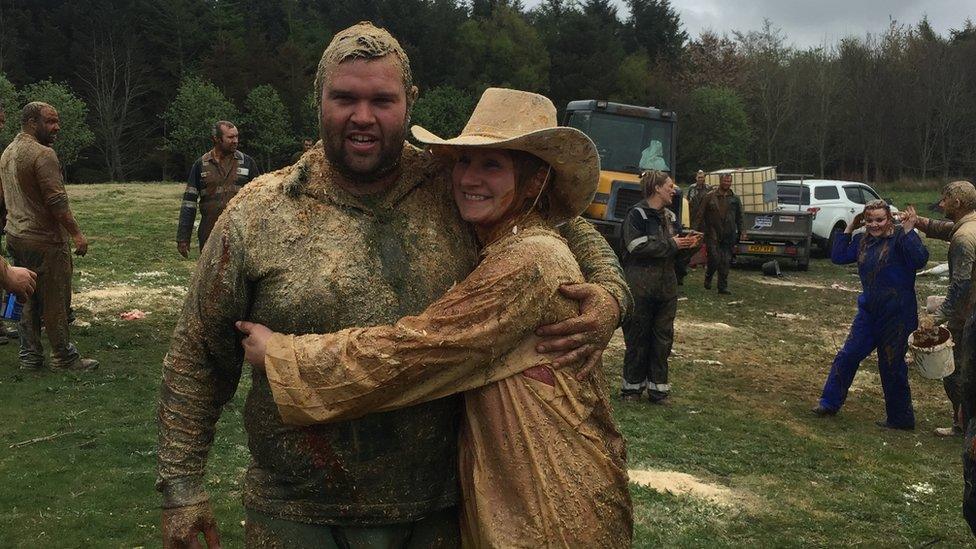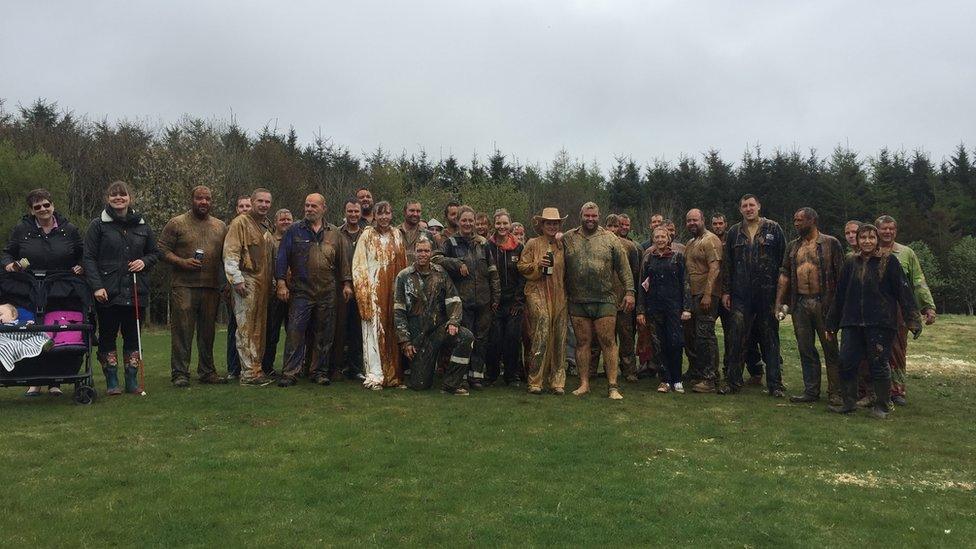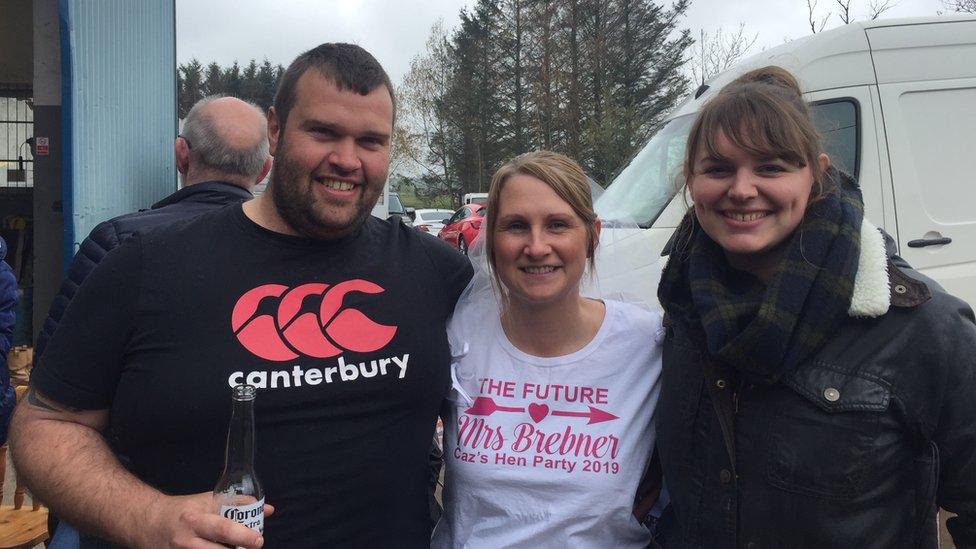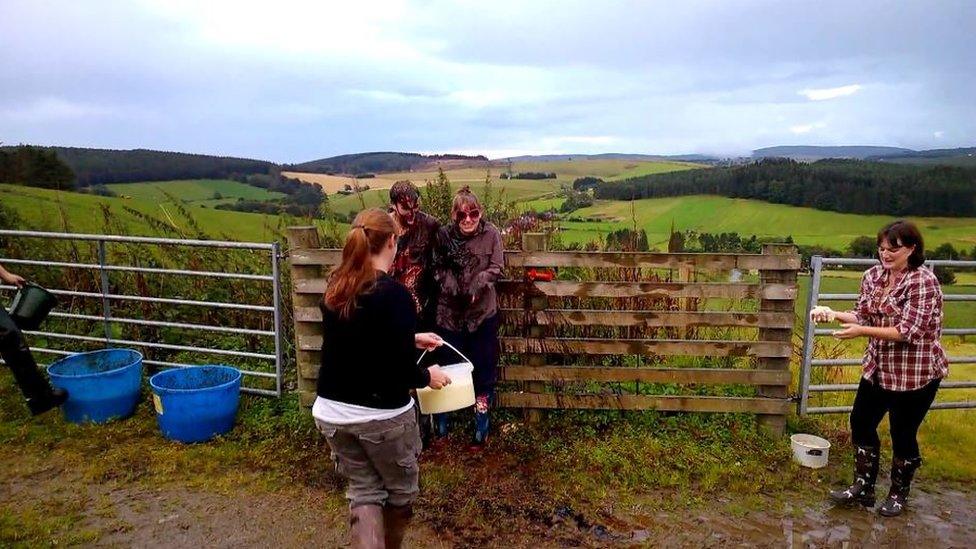Blackening: a really dirty pre-wedding tradition
- Published

Ross and Caz after the Blackening
Hen and stag dos can be pretty riotous but a pre-wedding tradition in the north east of Scotland called a Blackening takes disgusting behaviour to another level.
The engaged couple are kidnapped by friends and family and gunked with anything from rotten eggs and fish guts to dog food and molasses.
The practice is said to bring luck but it looks more like an excuse to even scores before the big day.
Ross Brebner, from Lonmay in Aberdeenshire, is a big fan of a blackening and it has occasionally seen him getting a little over enthusiastic.
"I was at a pal's blackening and I took out the best man," he tells BBC Scotland's Hidden Lives. "He was on crutches for the wedding."
Presenter Sam Little catches up with the happy couple after their gunking.
But now the tables are to be turned.
Ross, 33, is getting married to Caz, 35, and his friends need to work out how to bring the big man down.
His mate Keith says Ross and Caz will be nervous about the blackening because they know the community will come together to get them.
"It is the one part of the wedding they have no control over," he says.

Family, friends and the whole community are involved in the blackening
But Keith is concerned about Ross's strength when it comes to trying to capture him.
"He's good at rugby so battering people off is not a problem," he says.
Ross's brother Alistair agrees. "He's a fair unit," he says. "He's quite short but he's strong and he's round. Chasing him will be OK but he'll just fight us off."
The plan is to catch Ross by surprise and have a group of big lads bring him down.

Ross and Caz with presenter Sam Little (right) after they had cleaned up
They have cable ties ready to restrict his movement once they catch him.
Before the big day, they pick up the ingredients.
From the farm they take molasses, a base covering to which everything else sticks, and brewer's barley.
Then they are off to Fraserburgh for fish waste - guts, eyeballs and tails.
"Everyone is used to cow dung and molasses but not the fishing side of stuff," says Keith. "It's supposed to be about things you are not used to."

Where did blackenings come from?

Presenter Sam Little experienced a blackening when she got married
"If you never knew anything about blackening and you chanced upon it on a village green you would really think you were witnessing a medieval torture," according to Dr Sheila Young, from the University of Aberdeen's Elphinstone Institute.
Despite its current mucky form, it began as a cleansing ritual, preparing a woman for marriage, Dr Young said.
"When I started doing my research I found women before the 1980s actually called it a feet-washing," she said.
It was very similar to today's blackening but the name came from an earlier ritual that did involve washing feet, after blackening them with soot from the chimney.
"If you were getting married, you had your feet washed and that was a sign you intended to go through with the wedding," Dr Young said.
In the past, weddings among the farming communities of rural Scotland were mainly in the winter but greater mechanisation and affluence saw more people getting time to marry in summer.
As the feet washing moved outdoors, behaviour changed, Dr Young says.
Over time it saw people trying to run away and when they were captured they were covered in as much mess as could be found.
"It moved from being a cleansing ritual, preparing you for marriage, to very much a dirtying ritual," Dr Young said.

Dirtying ritual
Back in Aberdeenshire, Caz was easy to capture but Ross put up more of a fight.
In the end, everyone was covered in gunk and maybe that's the point, says Hidden Lives presenter Sam Little.
She says that at a time when everything around weddings is commercialised, this disgusting, home-made tradition is a great way of bringing the community together.
Hidden Lives - The Blackening is on BBC Scotland at 20:30 on Thursday 7 November.